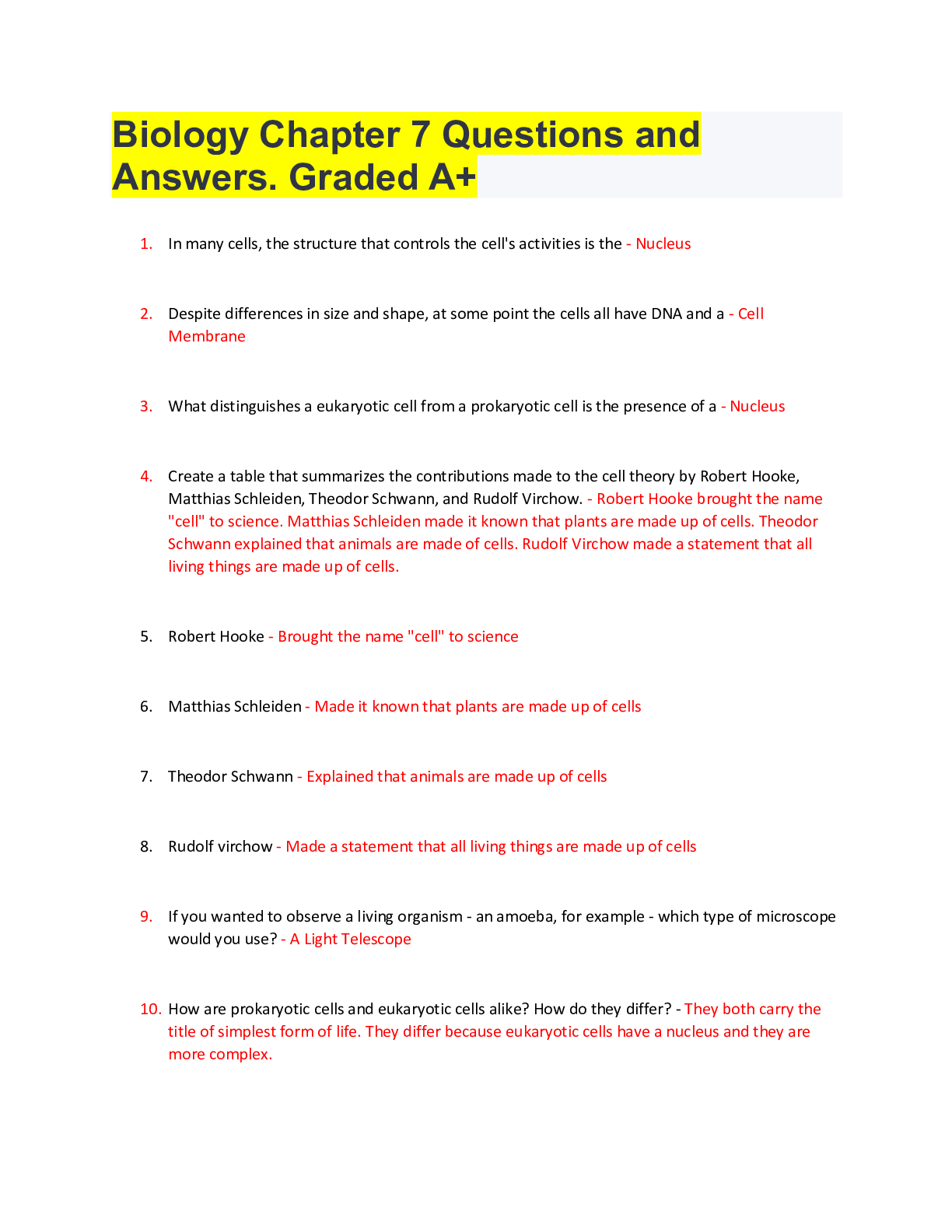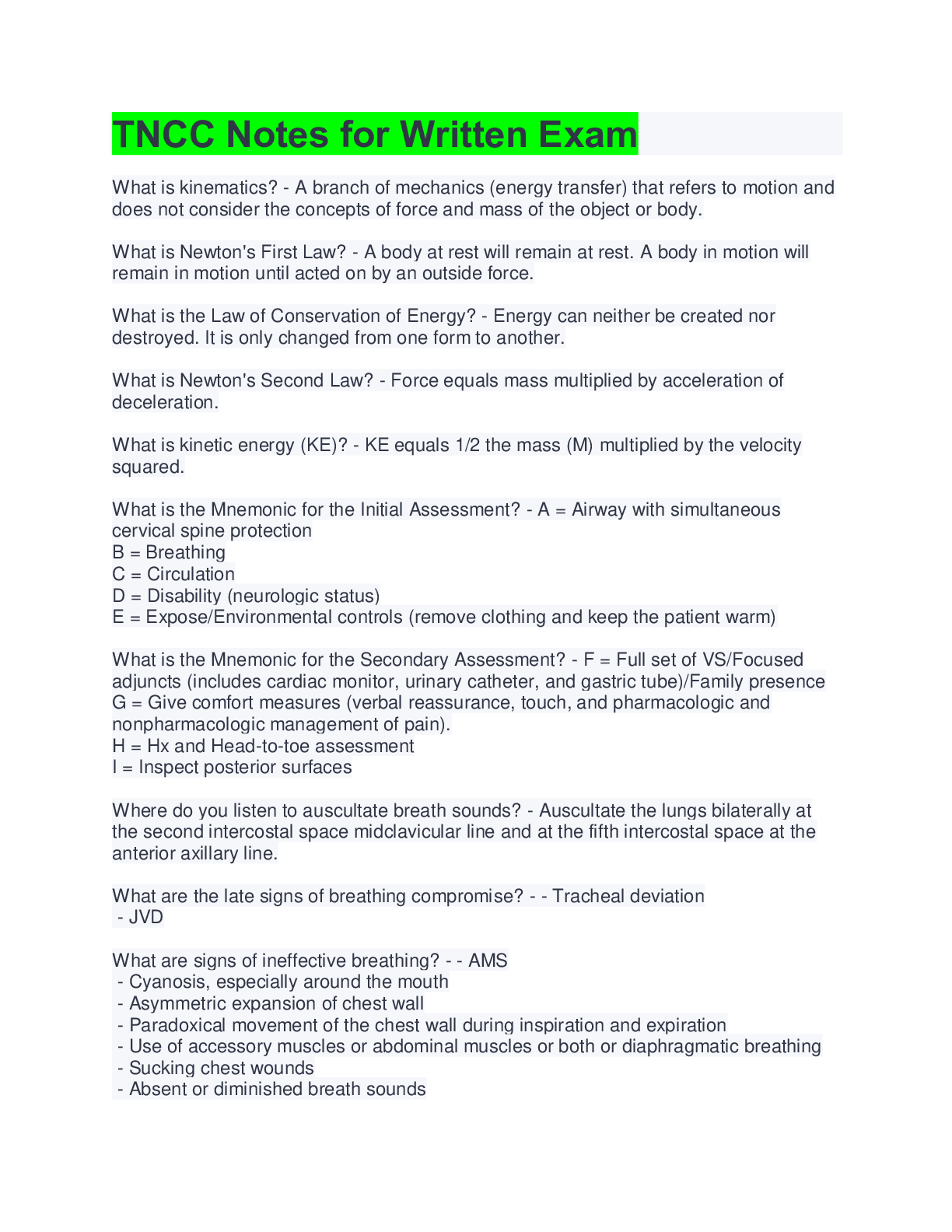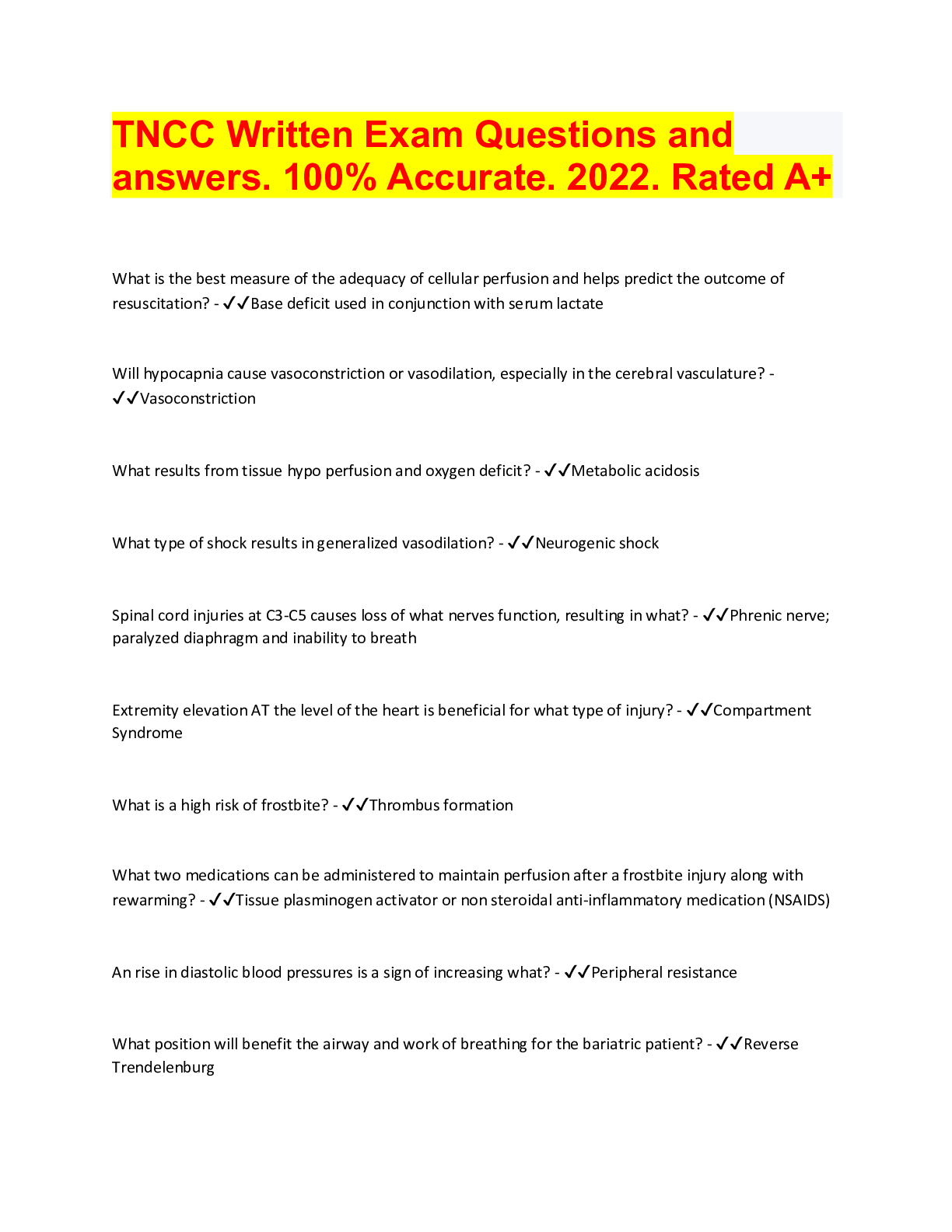Health Care > QUESTIONS & ANSWERS > TNCC Written Exam. All Questions and answers. Graded A+ (All)
TNCC Written Exam. All Questions and answers. Graded A+
Document Content and Description Below
List four different shock syndromes that are classified according to the underlying pathology. - ✔✔- Hypovolemic - Cardiogenic - Obstructive - Distributive pg. 78 List three conditions assoc... iated with obstructive shock. - ✔✔- Cardiac tamponade - Tension pneumothorax - Air embolus pg. 78-79 Name two mechanisms that may result in hypovolemic shock for the trauma patient. - ✔✔- Significant loss of whole blood - Loss of the semipermeable integrity of the cellular membrane leading to leakage of plasma and protein. pg. 78 Identify the pathophysiology of cardiogenic shock and some of the causes. - ✔✔- Inadequate contractility of the heart muscle leads to ineffective perfusion resulting in cardiogenic shock. Causes include: - MI - Blunt cardiac injury- MItral valve insufficiency - Dysrhythmias - Cardiac failure pg. 78 Describe the pathophysiology and identify two examples of distributive shock. - ✔✔Distributive shock results from disruption of the sympathetic nervous system control of blood vessel tone, resulting in vasodilation and maldistribution of the blood volume. Examples include neurogenic and spinal shock. pg. 79 What is the primary goal of the body during shock state? - ✔✔The primary goal is to maintain perfusion of the brain, heart, and lungs. pg. 78-80 List the signs of shock resulting from adrenal gland release of catecholamines (epinephrine and norepinephrine). - ✔✔- Tachycardia - Increased anxiety - Compensatory rise in DBP pg. 81 Identify two physiological reasons for the development of tachypnea during shock. - ✔✔- Maintain acid/base balance - Maintain an increased oxygen supply pg. 81Identify early changes that may occur in the patient's level of consciousness as cerebral perfusion diminishes. - ✔✔- Restlessness - Anxiety - Confusion pg. 82 What changes in pulse pressure (difference between systolic and diastolic pressures) are noted during shock? - ✔✔As cardiac output falls and blood vessels constrict, systolic pressure falls and diastolic pressure rises causing the pulse pressure to narrow. A narrowing pulse pressure is an ominous sign. pg. 84 Identify the four types of blood volume replacement available for patients who do not respond to crystalloid fluid replacement. - ✔✔- Type-specific and crossmatched blood (ideal, but may take longer to get) - Type-specific blood (usually available within minutes) - O-neg PRBC's (considered "universal donor") - O-pos PRBC's (if O-neg is scarce, this may be used for male patients because they are less likely to have anti-D antibodies) pg. 84 Why should UOP be used to monitor fluid resuscitation? - ✔✔The ability of the kidneys to form urine is a reflection of the patient's overall perfusion status. pg. 86 Describe coup-contrecoup injuries to the brain. - ✔✔When the head strikes a solid object, the sudden deceleration can result in a pressure wave which travels across the cranial contents and may tear tissue, resulting in injury on the side of impact (coup) and the side opposite the point of impact (contrecoup).pg. 96 Cerebral autoregulation maintains a constant cerebral blood flow as long as the systemic mean arterial pressure is within what range? - ✔✔60 - 150 mmHg pg. 94 Define cerebral perfusion pressure (CPP) and describe the possible effects if CPP falls below 70 mmHg. - ✔✔- CPP is the difference between the pressures of the cerebral arterial and venous vessels and is calculated: mean arterial pressure minus intracranial pressure (CPP = MAP - ICP) - When CPP falls below 70 mmHg, there is increased risk of ischemia to areas of the brain. pg. 94-95 Define Cushing's response or reflex. - ✔✔- Increased SBP - Widening pulse pressure - Reflex bradycardia - Diminished respiratory effort - Ischemia initiates a central nervous system response which causes an increase in systolic pressure, a widened pulse pressure, and reflex bradycardia, as well as a diminished respiratory effort. This is an attempt to increase cerebral blood flow. pg. 95, 97 ICP is a reflection of what three volumes? What is a normal range for ICP? - ✔✔- Brain- Cerebrospinal fluid - Blood - The normal range for ICP is 10 - 20 mmHg pg. 94, 97 Using the GCS, describe the difference between minor, moderate, and severe head trauma. - ✔✔- Minor head trauma = GCS of 13-15 - Moderate head trauma = GCS of 9-13 - Severe head trauma = GCS of 8 or less pg. 98 What is the difference between diffuse brain injuries and focal brain injuries? Give examples of each. - ✔✔Focal brain injuries occur in a localized area while diffuse brain injuries are more widespread. - Diffuse brain injuries = concussions, postconcussive syndrome, diffuse axonal injury. - Focal brain injuries = cerebral contusion; epidural, subdural, and intracerebral hematomas. pg. 99-100 Identify early and late signs and symptoms of increased intracranial pressure. - ✔✔Early signs = Headache, nausea/vomiting, amnesia to events surrounding injury, altered level of consciousness, restlessness, drowsiness, changes in speech, loss of judgement Late signs = Dilated, nonreactive pupil(s), unresponsive to verbal or painful stimuli, abnormal motor posturing, widening pulse pressure, increased SBP, changes in respiratory rate and pattern, bradycardiapg. 97 Identify two injuries that may result in CSF leakage and why. - ✔✔Fractures of the basilar skull or craniofacial structures can lacerate the dura mater creating a passage for discharge of CSF. pg. 98 Basilar skull fractures can be accompanied by bleeding into three different fossae. Identify assessment findings for each. - ✔✔- Anterior fossa fracture = periorbital ecchymosis (raccoon eyes) - Posterior fossa fracture = mastoid process ecchymosis (Battle's sign) - Middle fossa fracture = blood behind the tympanic membrane (hemotympanum) pg. 102 When should hyperventilation of head injured patients be considered? - ✔✔Hyperventilation should be considered in cases where increased ICP is clinically evident and other methods to decrease it are unsuccessful. Prolonged hyperventilation is NOT recommended because it can cause ischemia secondary to severe vasoconstriction. pg. 105 What is the best head position for a patient with head injury? - ✔✔Position the head midline to facilitate venous drainage. Elevation of the head is controversial because it may decrease CPP as well as ICP. Avoid rotation of the head because it can compress veins in the neck. pg. 105 List some of the early- and late-onset blindness or diminished visual acuity in the trauma patient. - ✔✔Early = - Posterior segment hemorrhag [Show More]
Last updated: 1 year ago
Preview 1 out of 15 pages
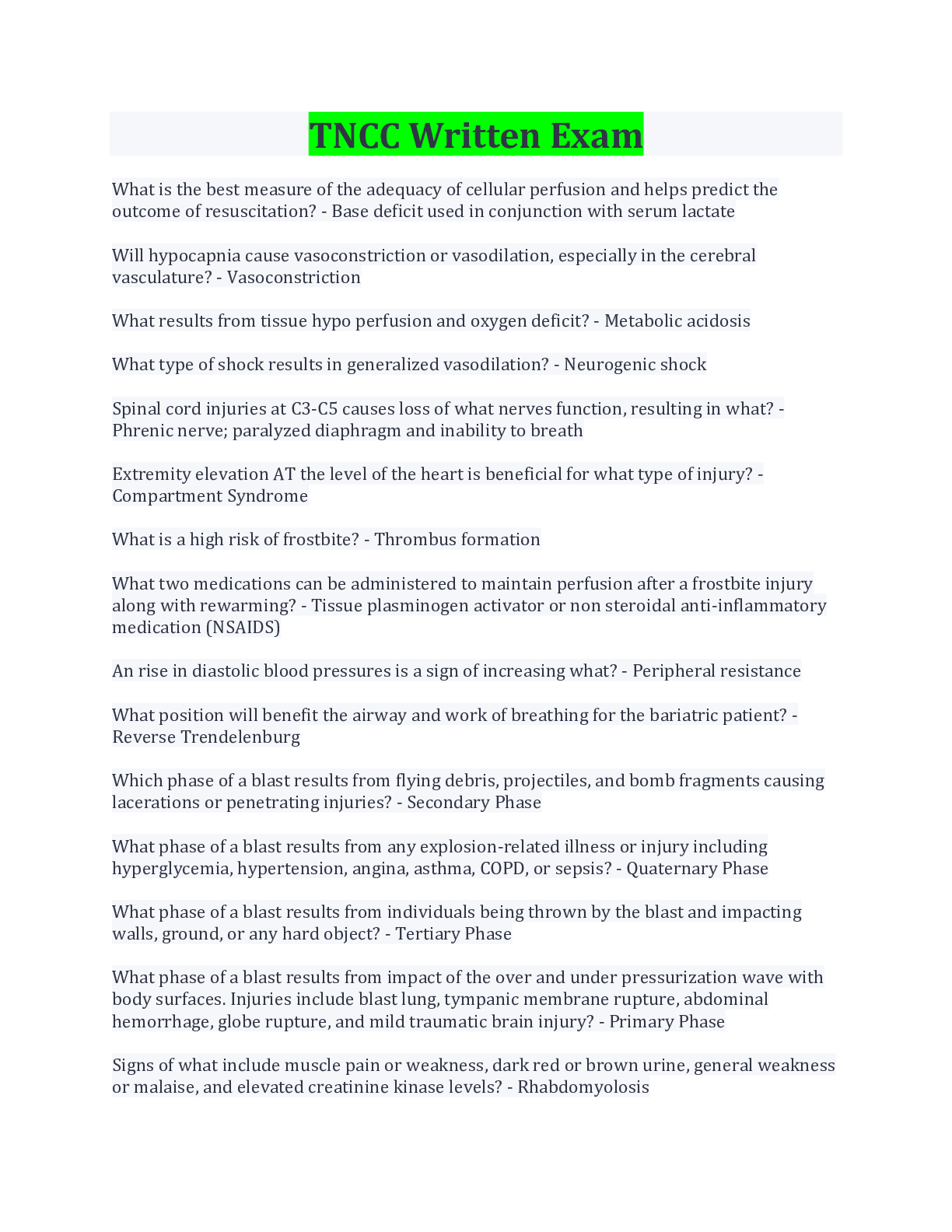
Also available in bundle (1)
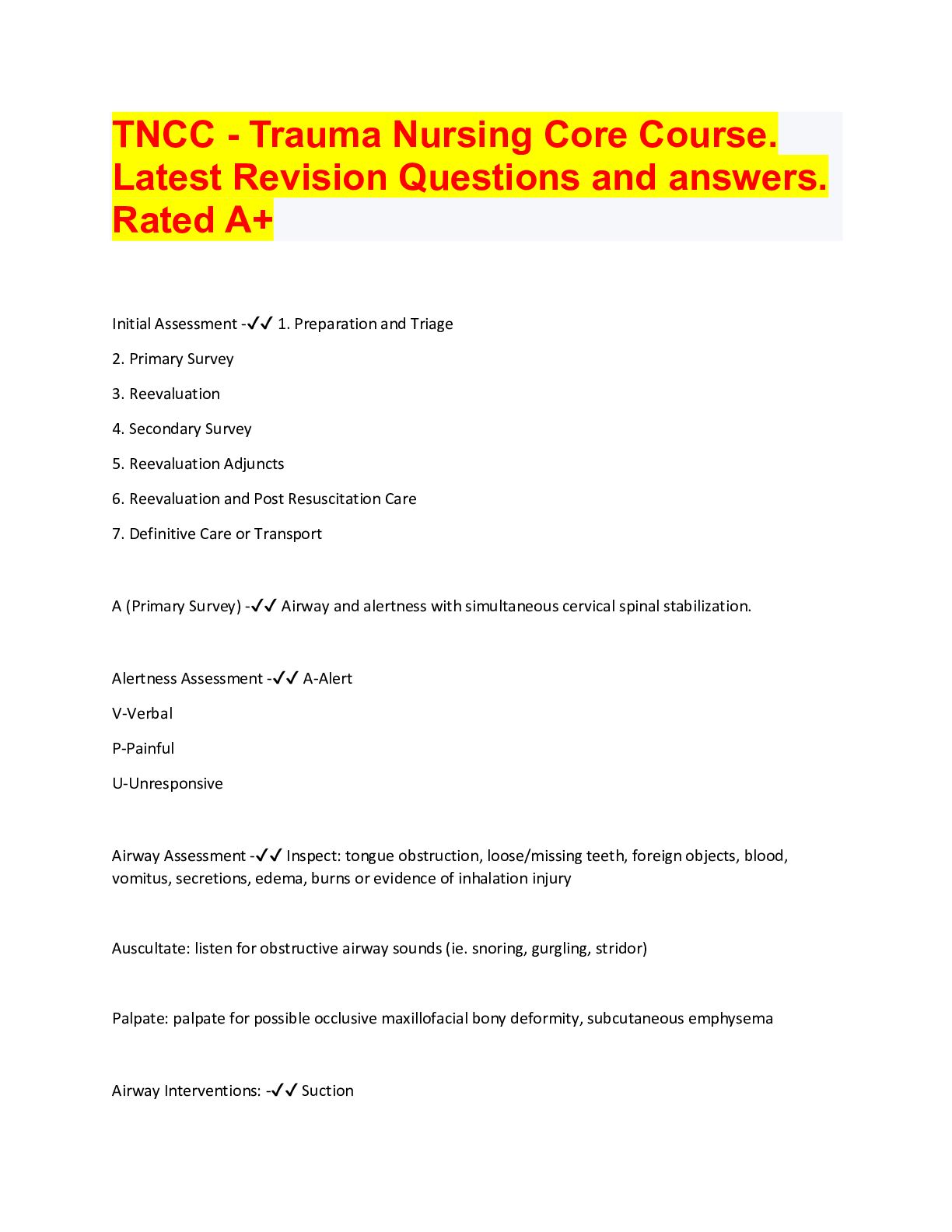
TNCC BUNDLE. QUESTIONS WITH 100% CORRECT ANSWERS. ALL GRADED A+ 99% APPROVED PASS RATE
THE BUNDLE is a compilation of latest and most examinable test questions with their answers. 100% approved. Download to score
By bundleHub Solution guider 1 year ago
$28
18
Reviews( 0 )
Document information
Connected school, study & course
About the document
Uploaded On
Jul 14, 2022
Number of pages
15
Written in
Additional information
This document has been written for:
Uploaded
Jul 14, 2022
Downloads
0
Views
137

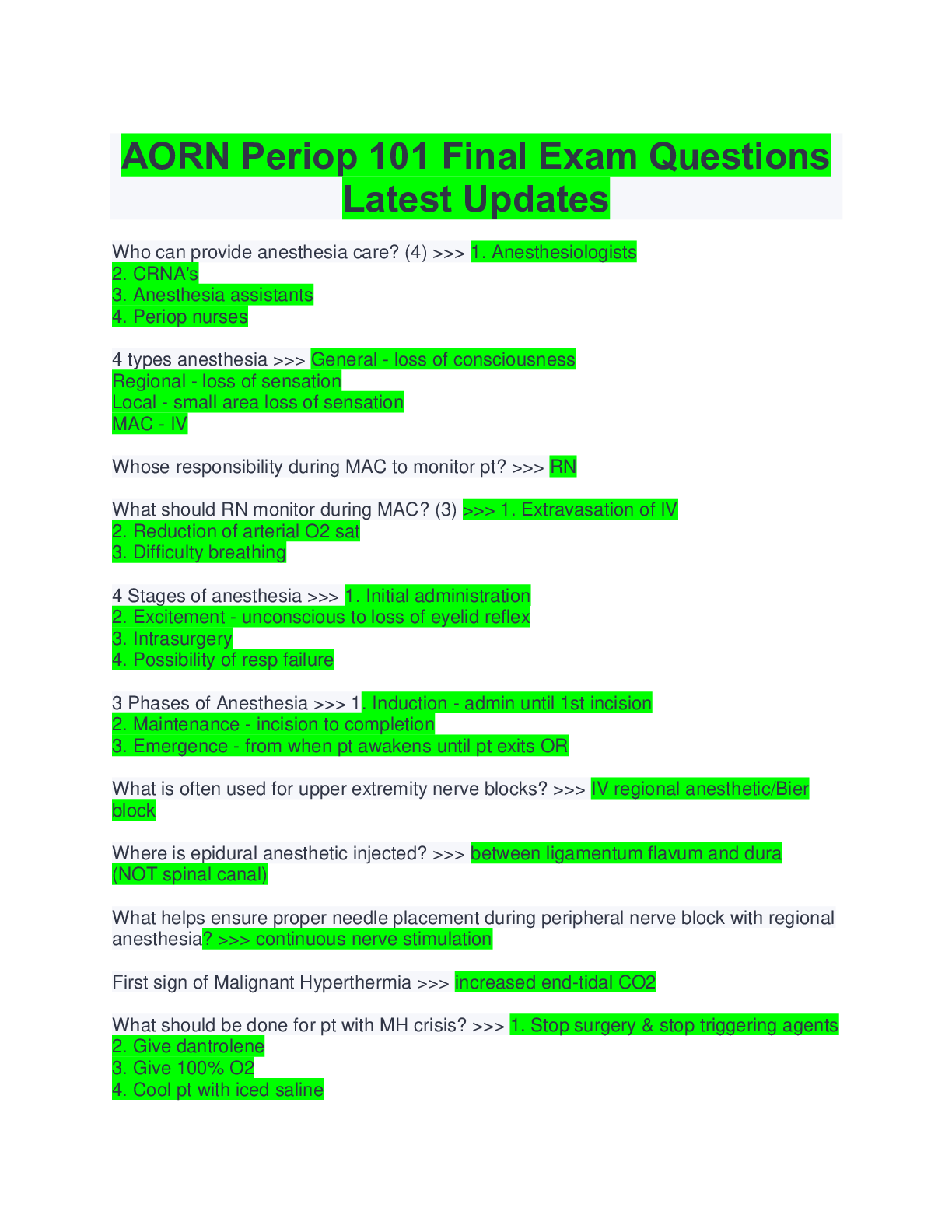






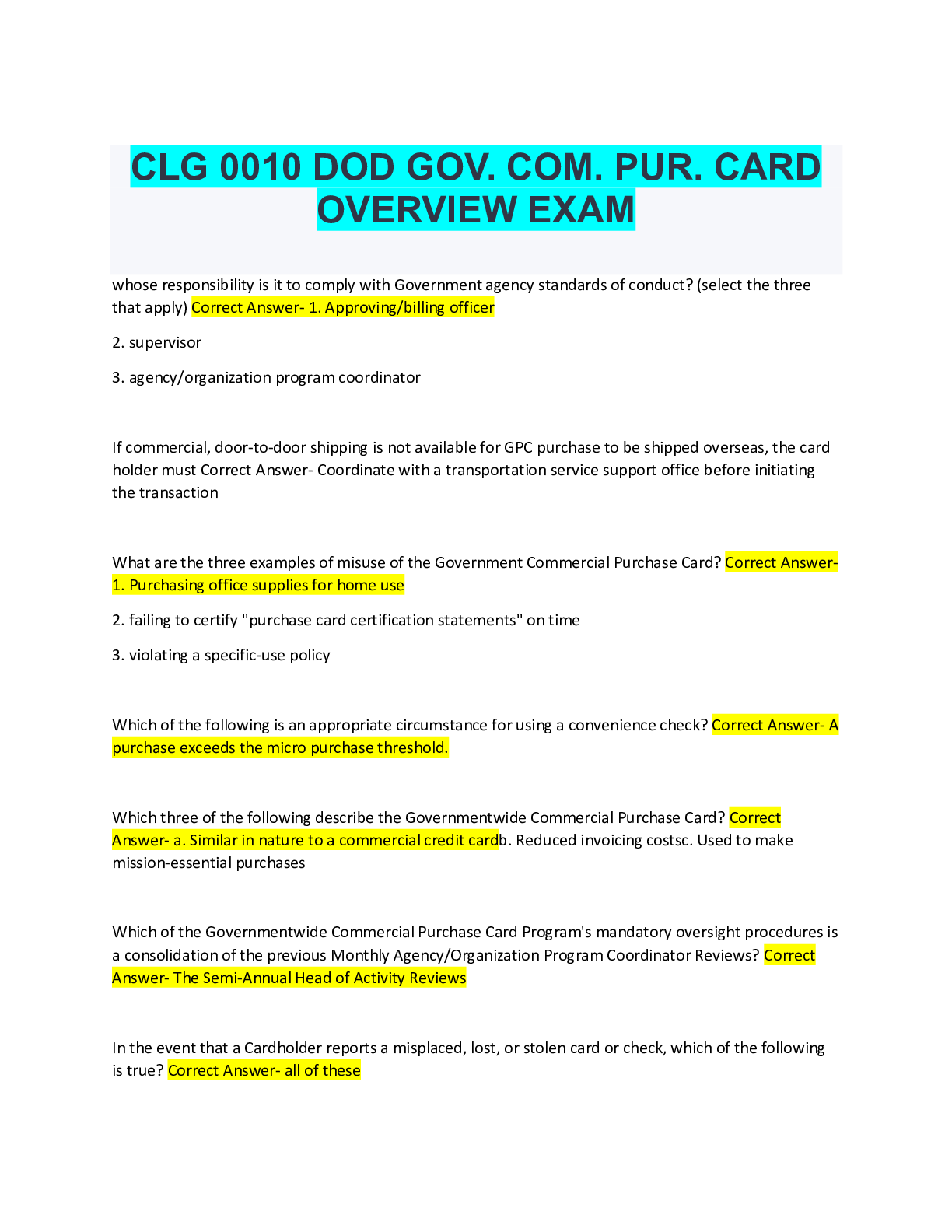


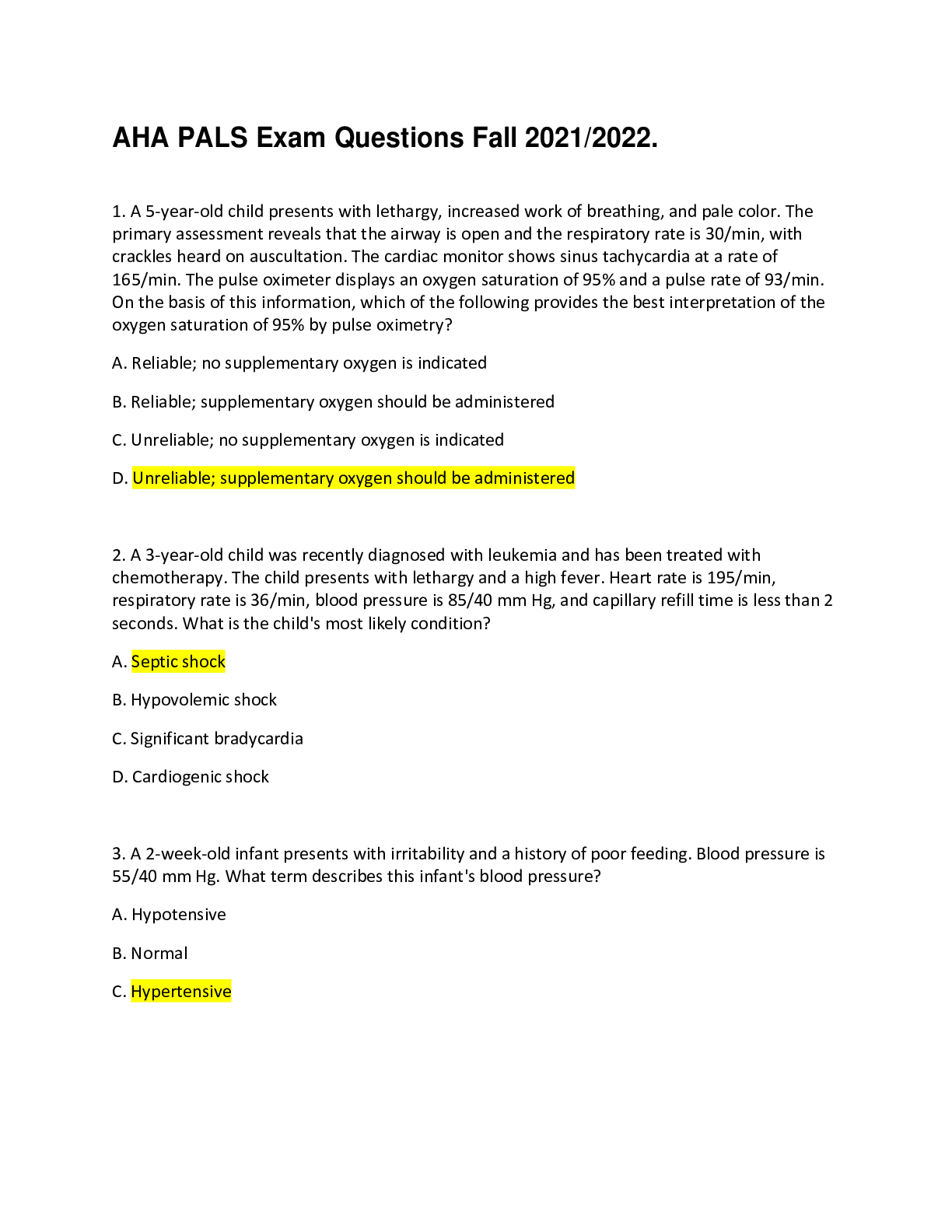

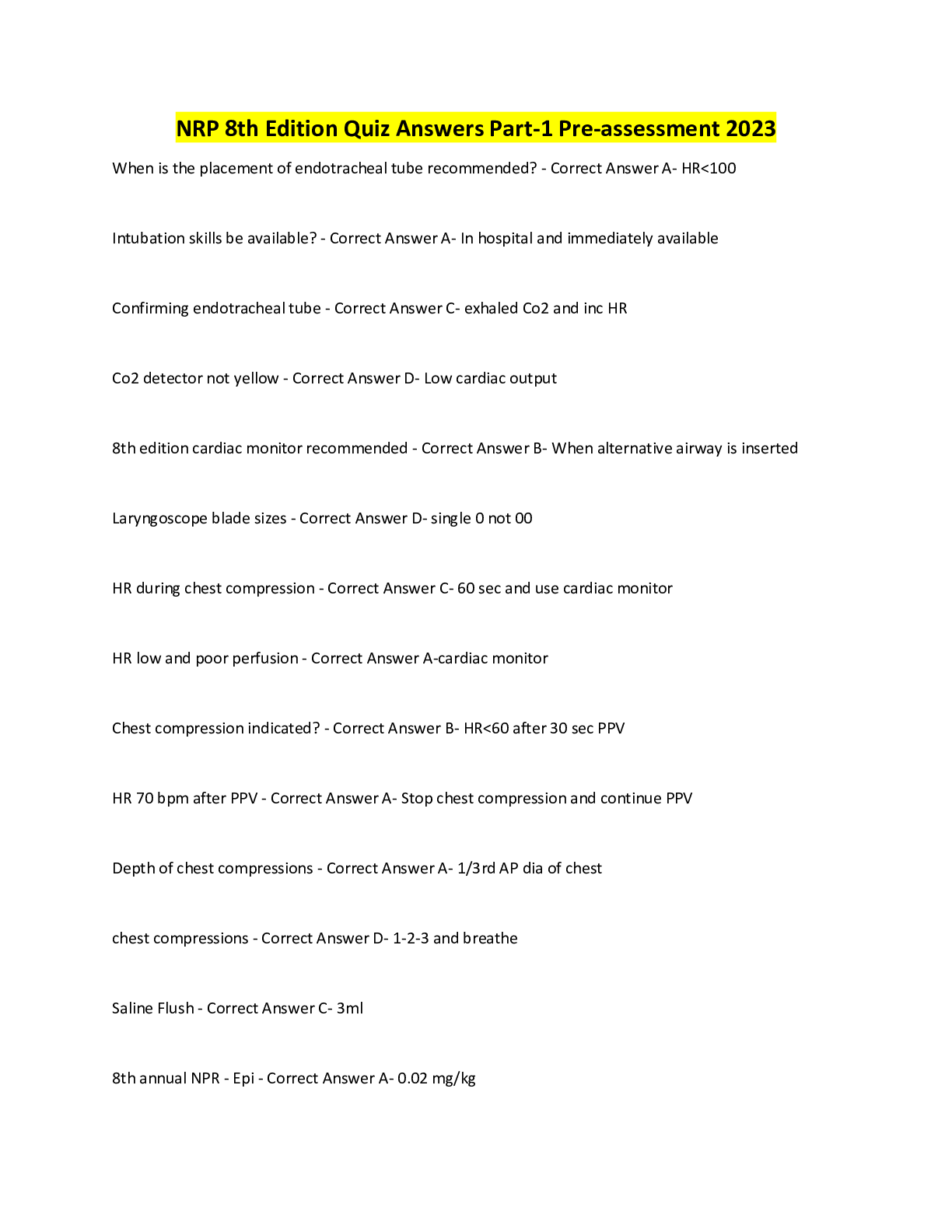

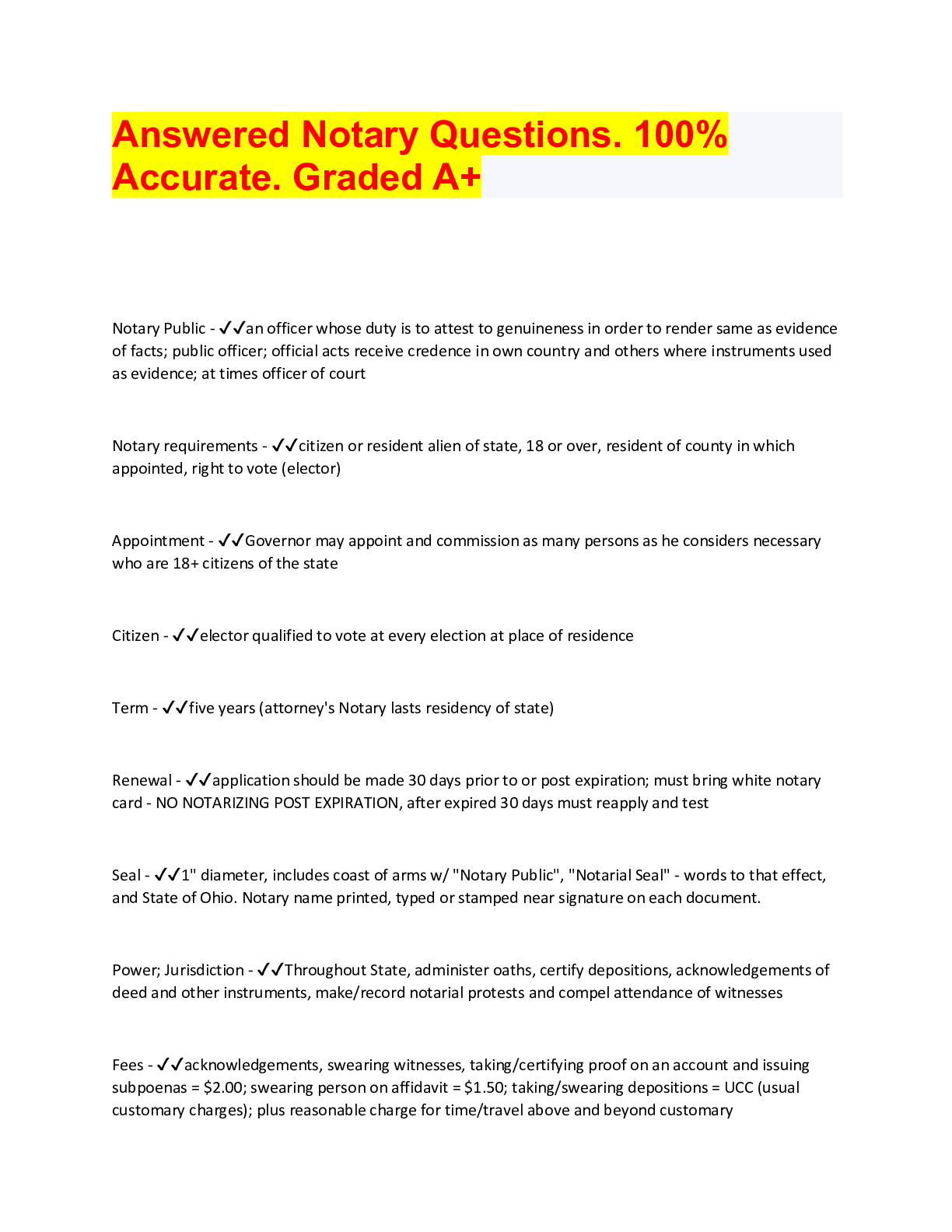

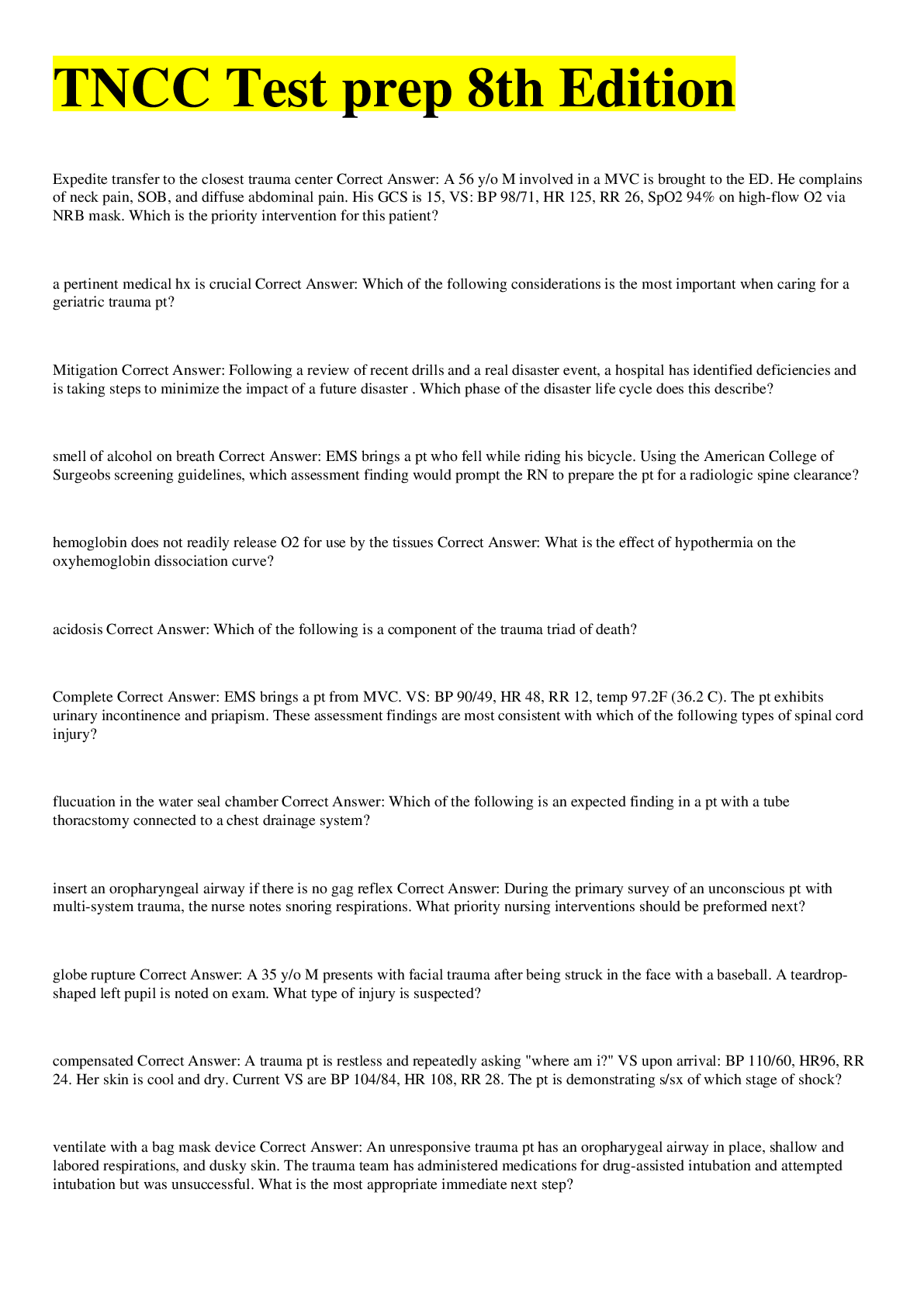
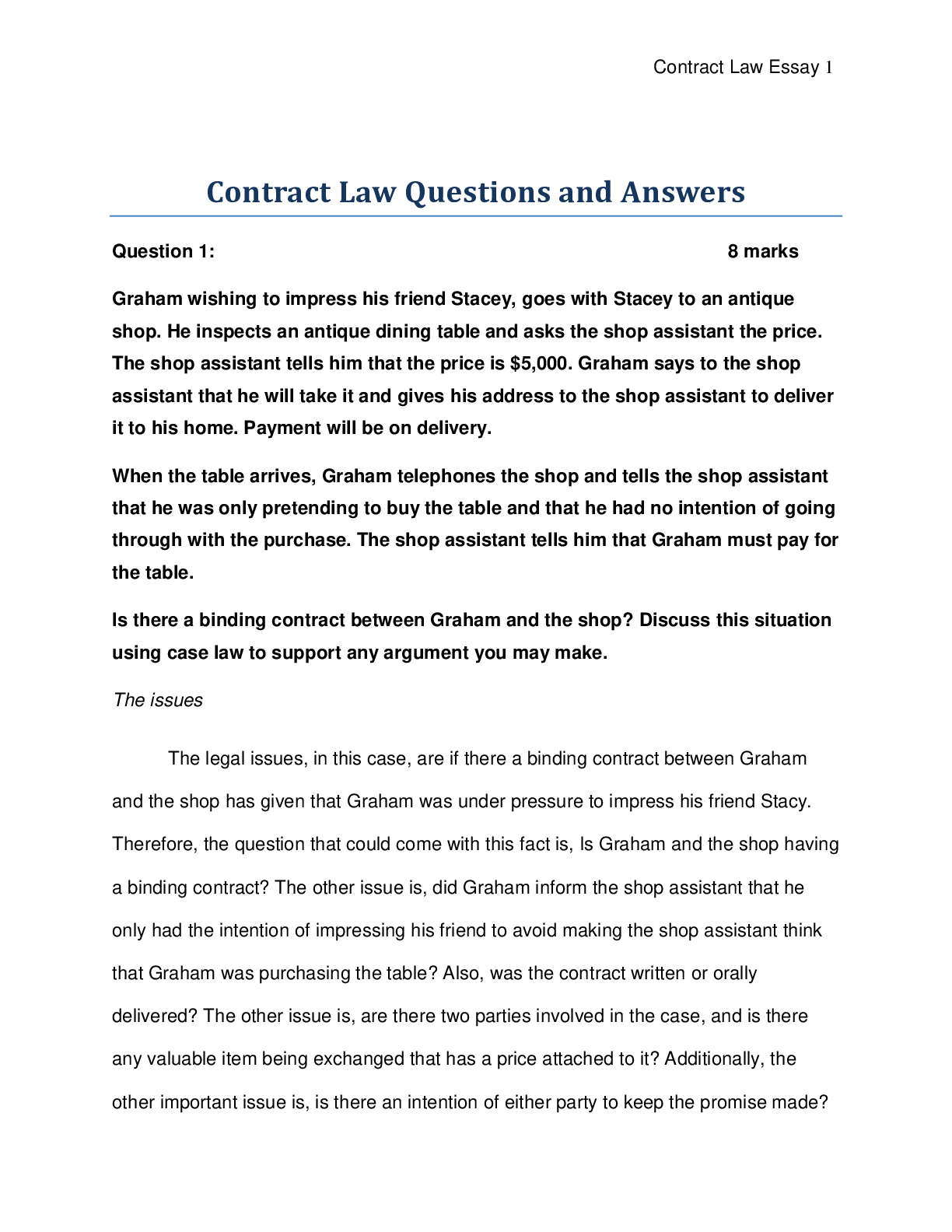
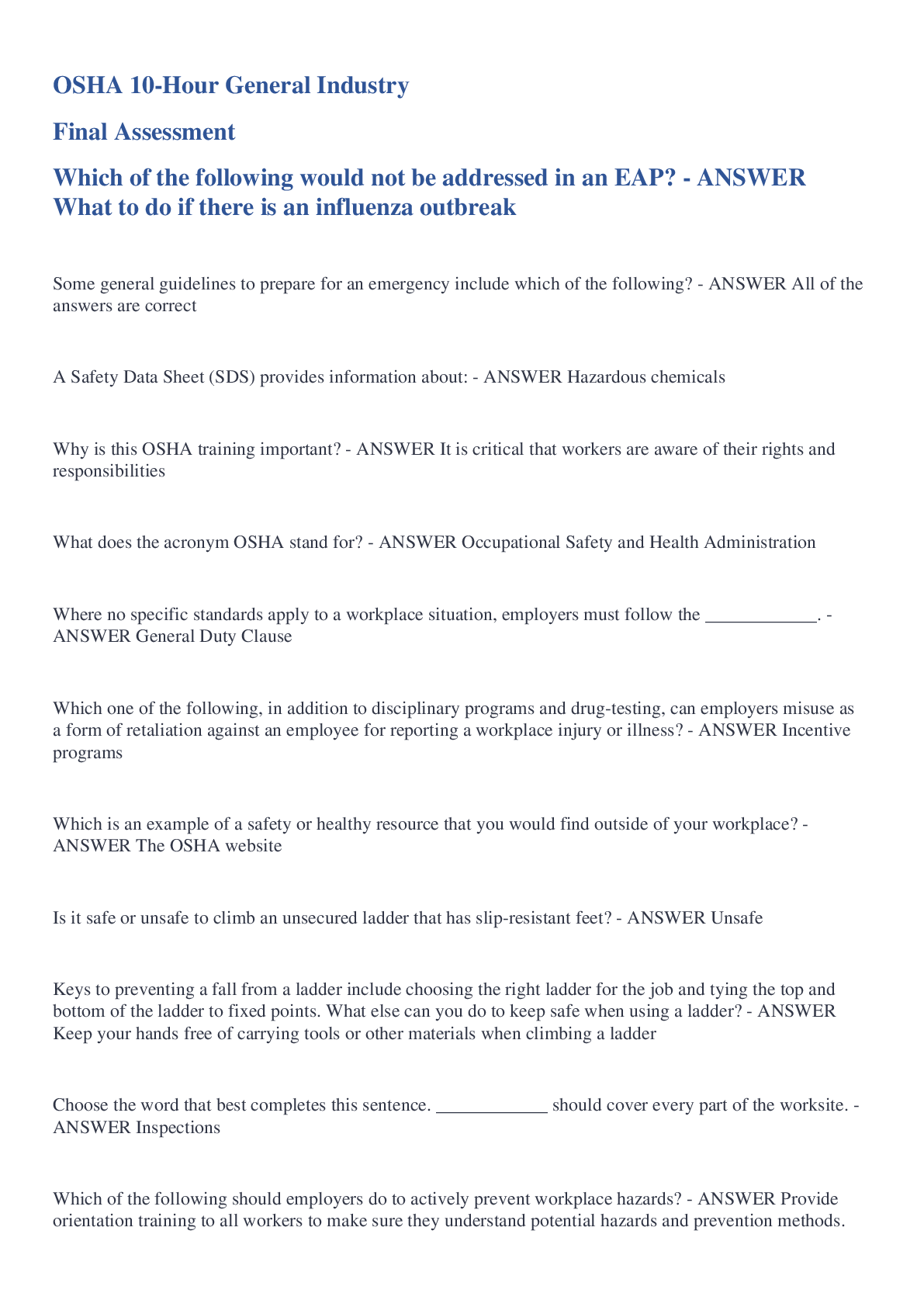
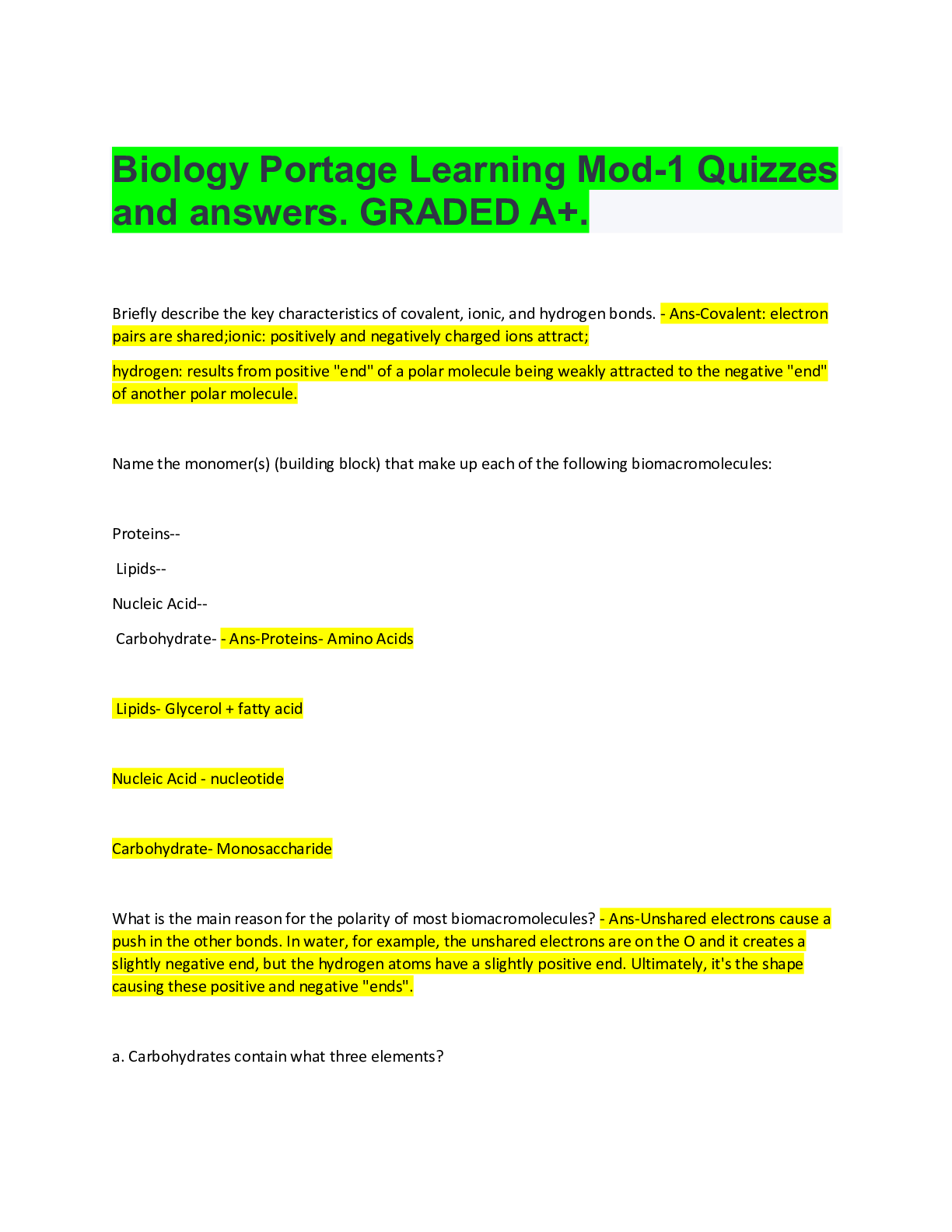
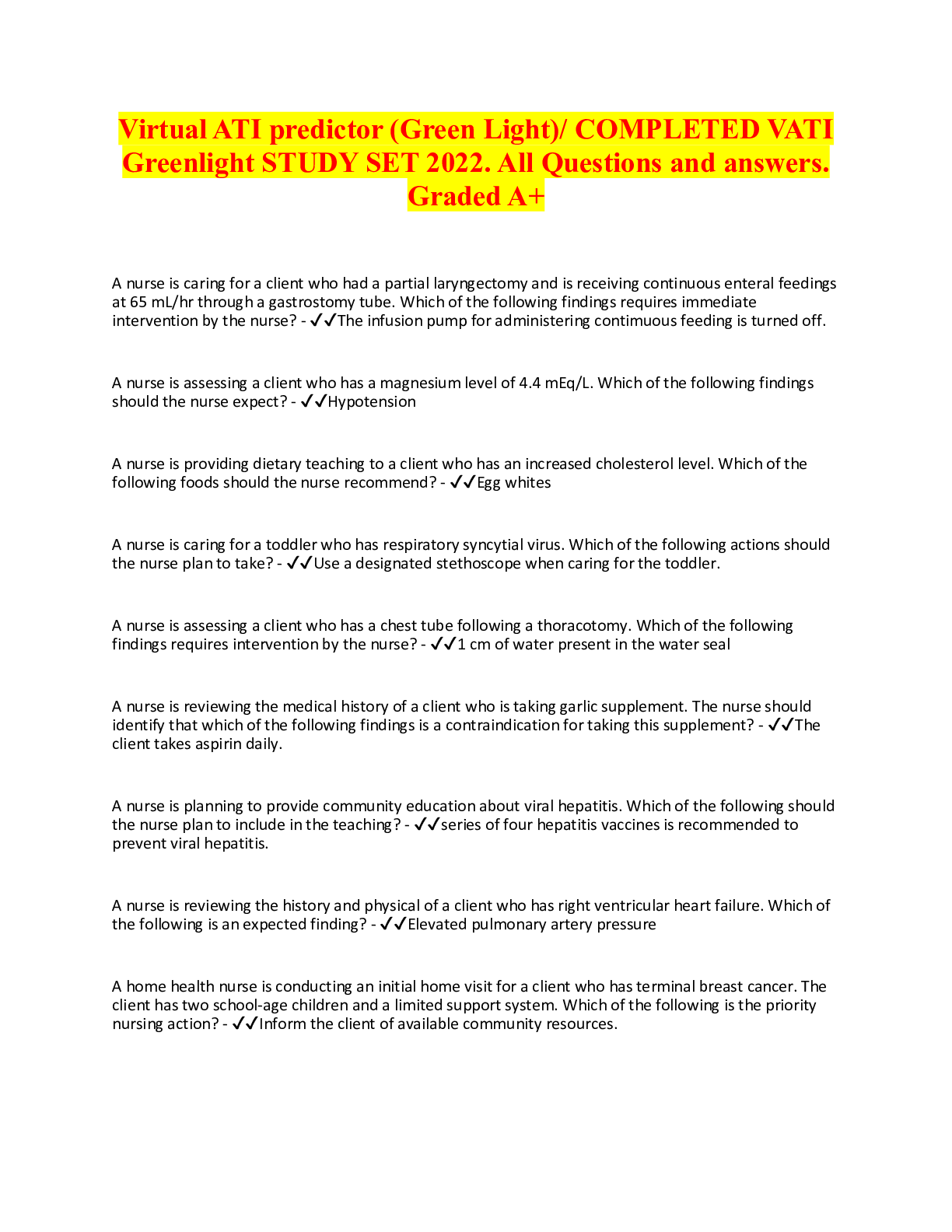
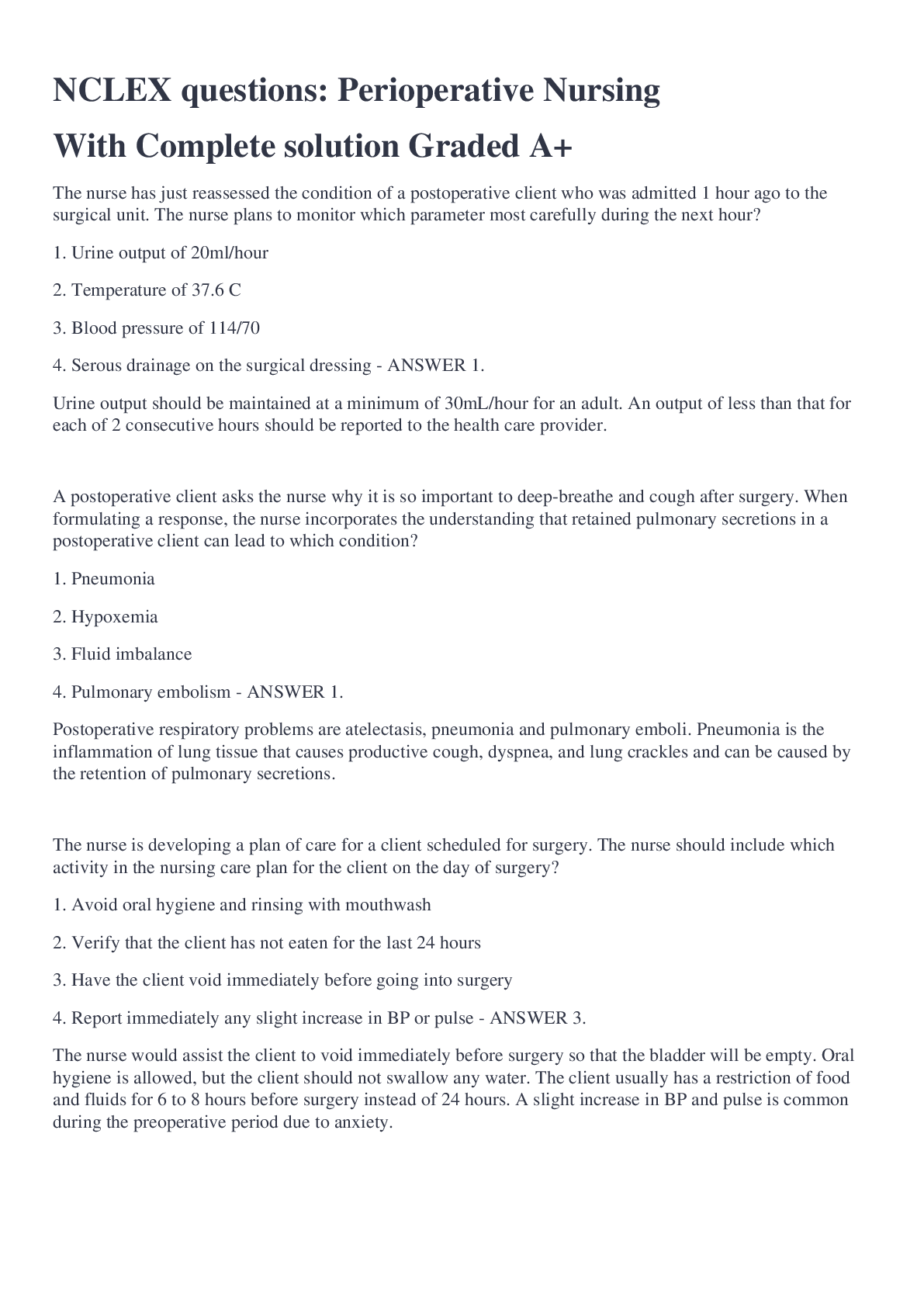
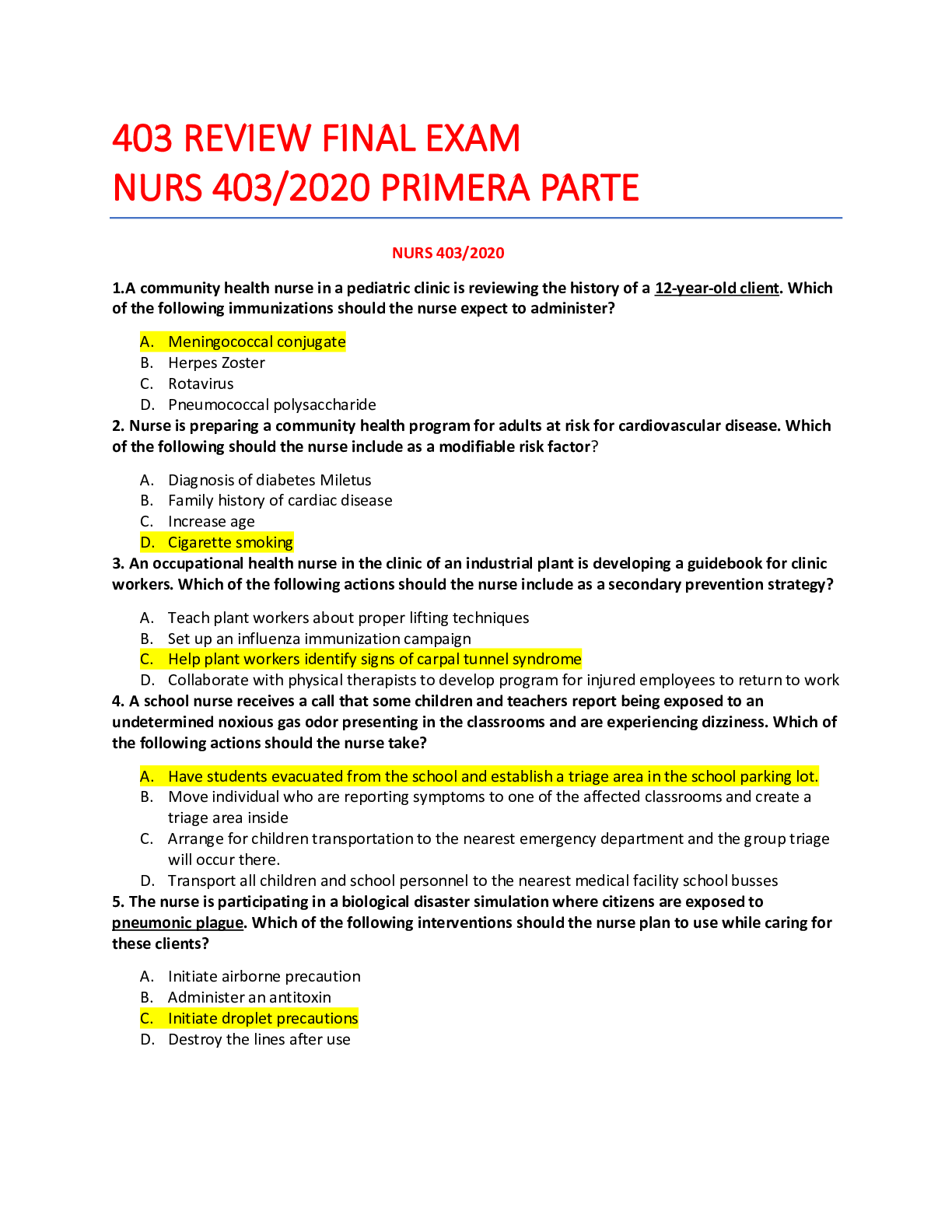
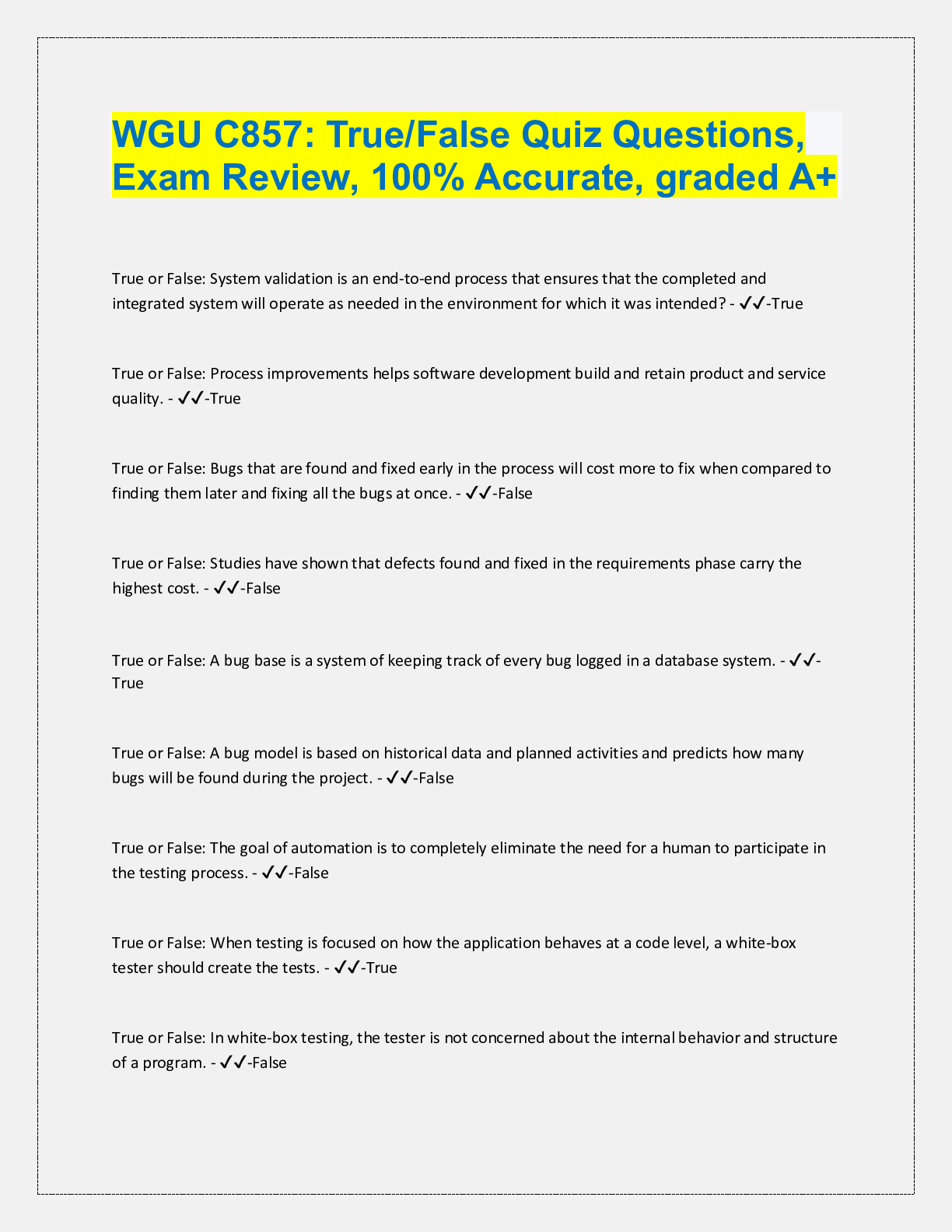
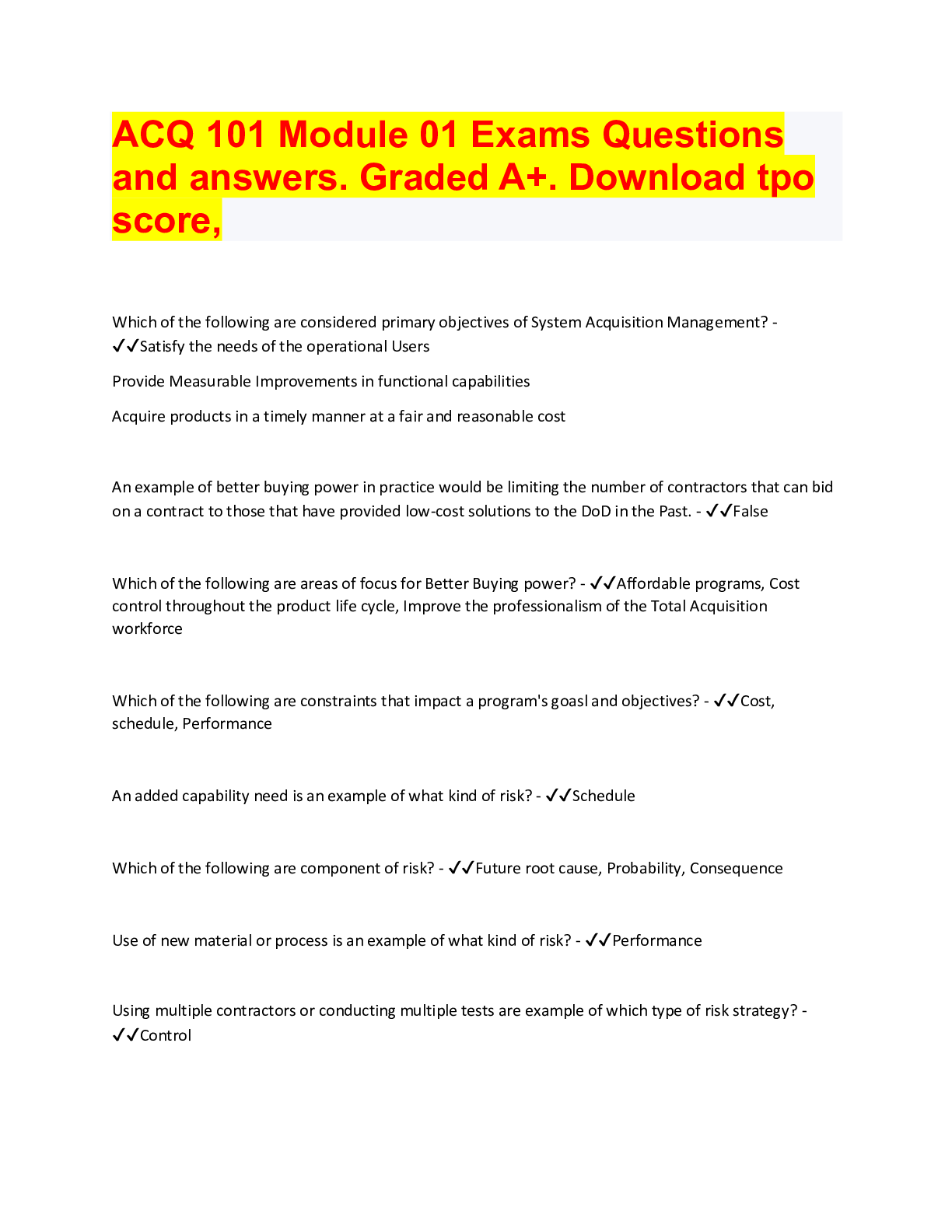
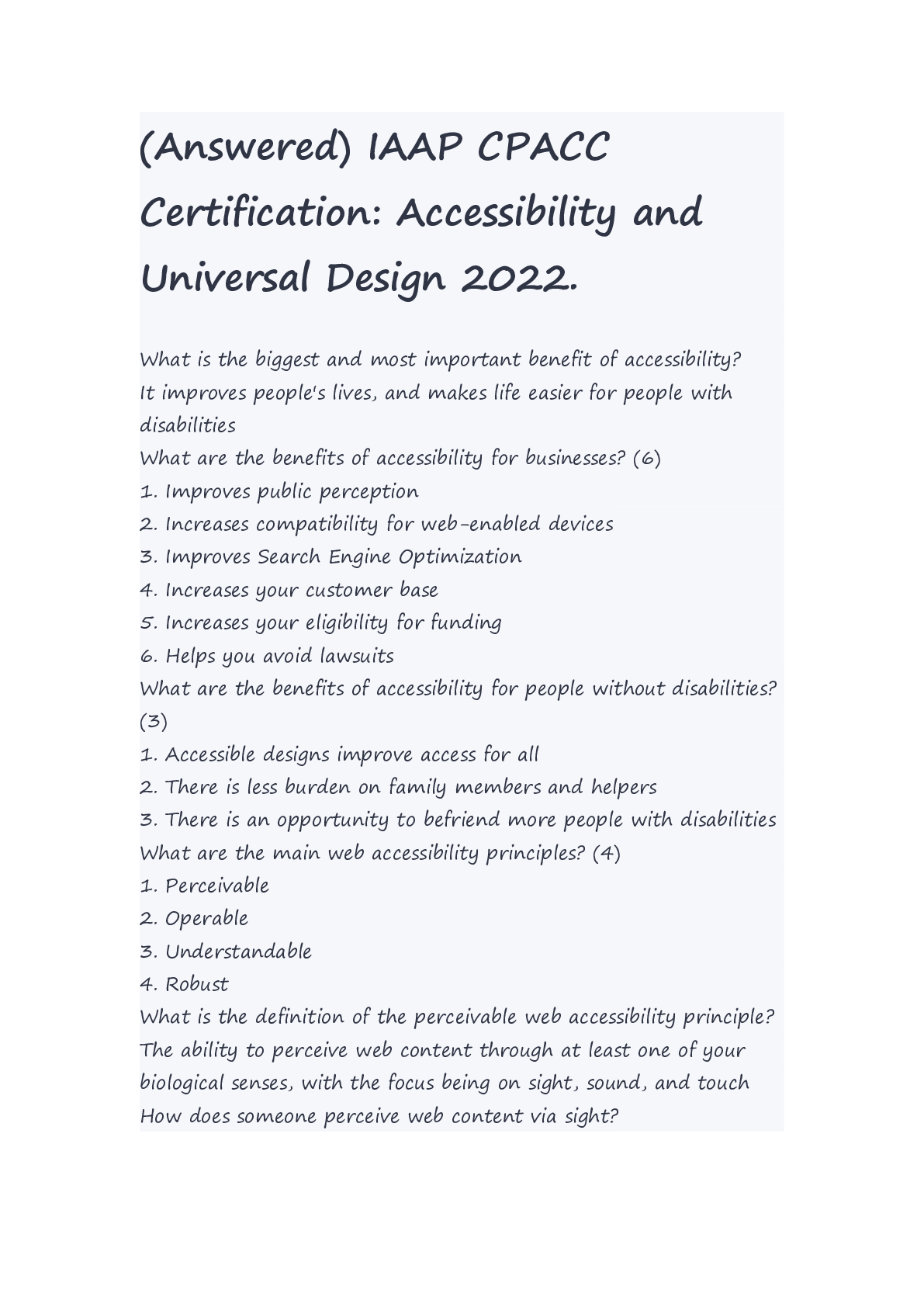

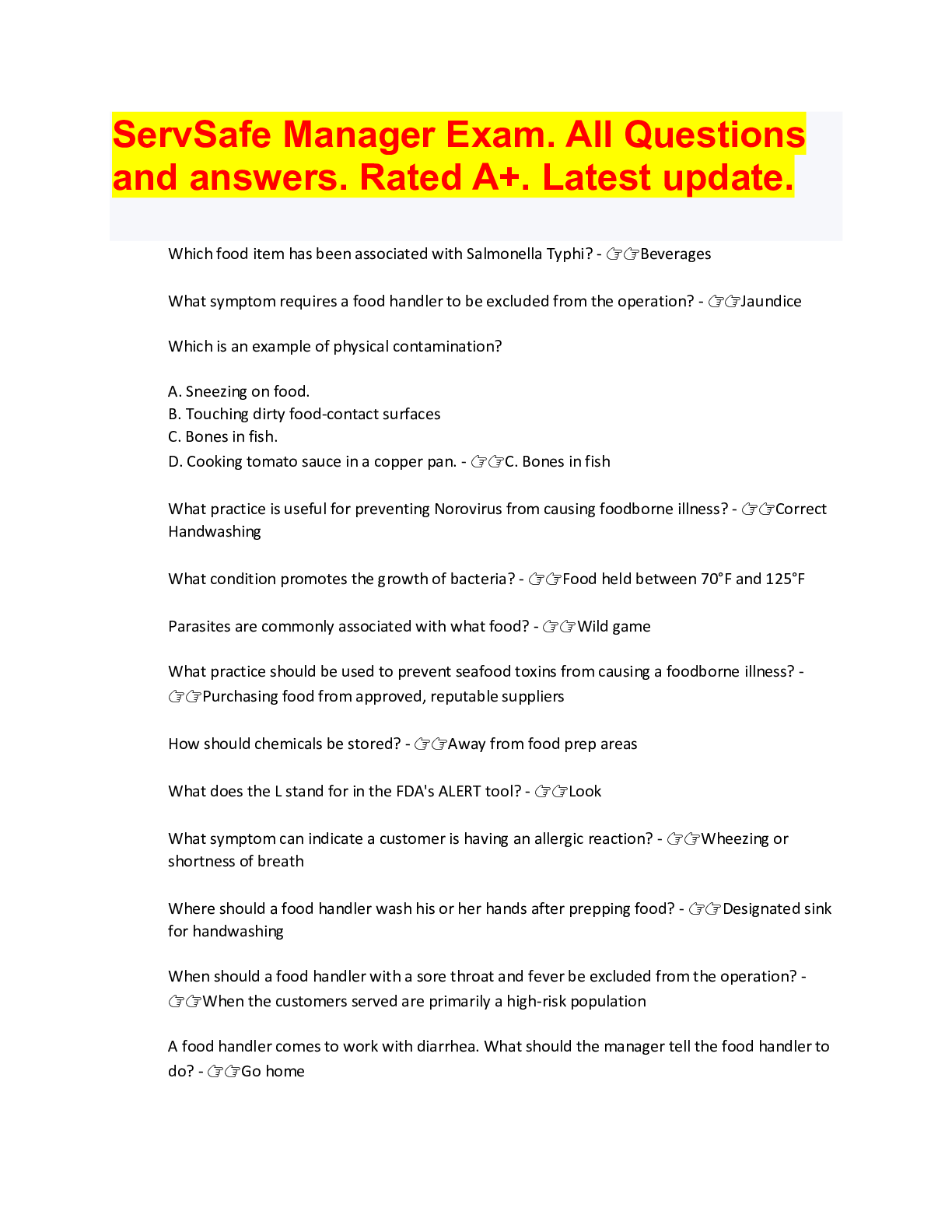
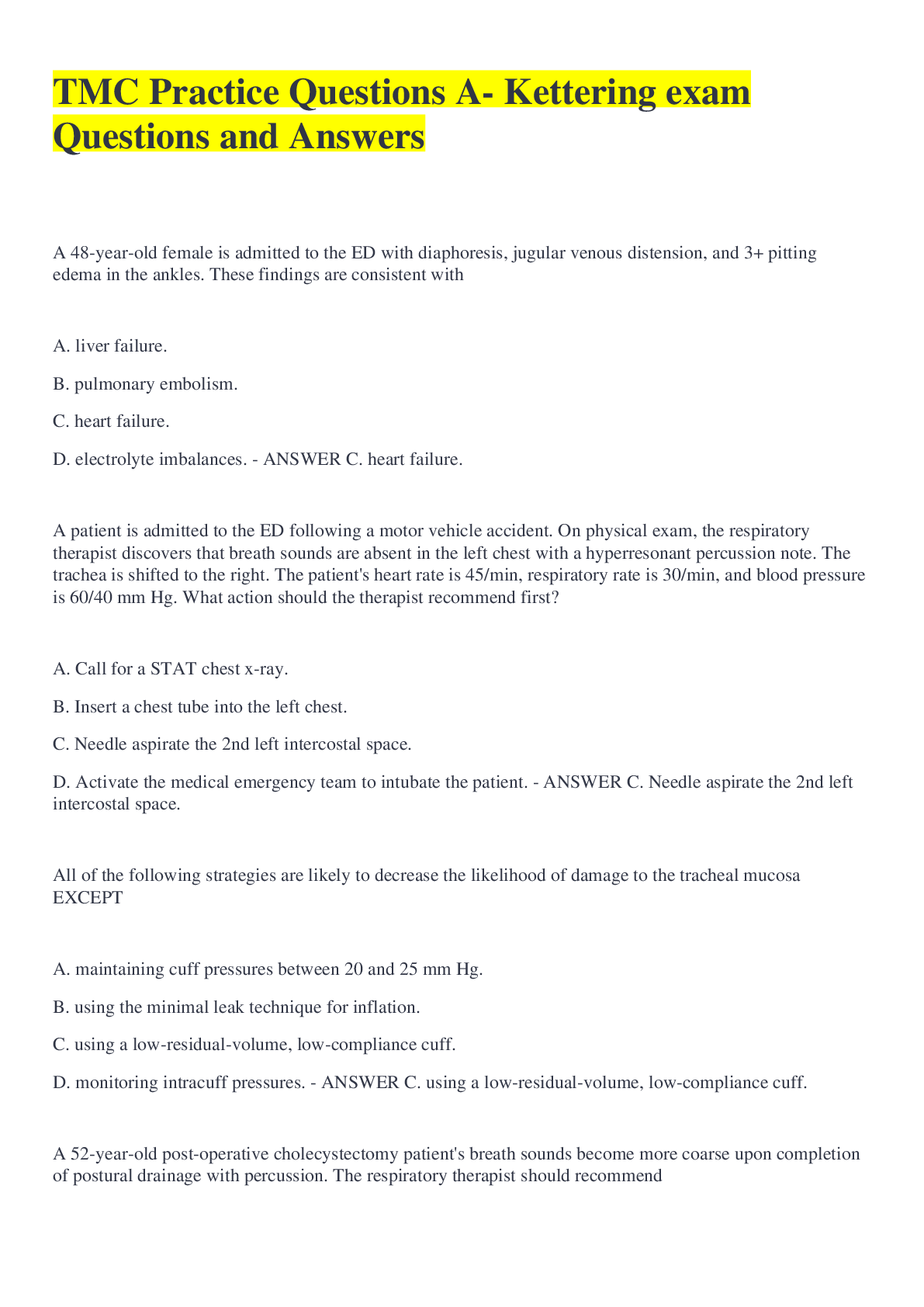
.png)
